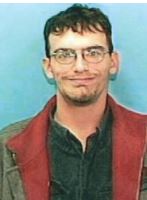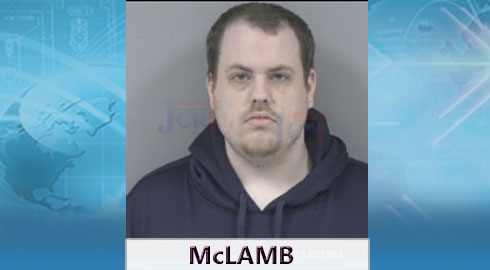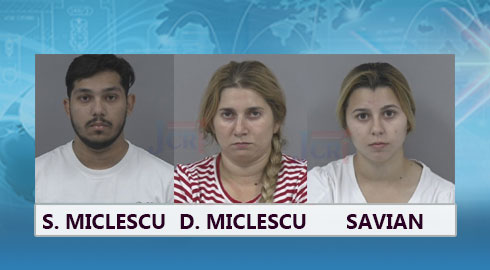DNA Discovery Ends 16-Year-Old Cold Case
LILLINGTON — In 2005, a group of children playing in an abandoned, burnt-out residence in Cameron discovered human remains.
Law enforcement, with little to go on, sent the bones off to the medical examiner’s office and the remains went unidentified for nearly two decades.
On Monday, the Harnett County Sheriff’s Office finally put a name to the mystery. Thanks to the combined efforts of science and old-fashioned police work, the family of Michael Joe Wesley Baker received long-awaited answers.

“Normally when I have to give these press conferences it’s not always for a good thing when I stand up here,” Sheriff Wayne Coats said. “It’s not the ending we wanted, but it brings closure to a family. This case ends today.”
Baker became one of 13 cases selected for a cold case pilot study in 2019 headed up by Dr. Ann Ross, a board certified forensic anthropologist in the department of biologic science at North Carolina State University. Ross secured funding for the study and chose the baker’s dozen worth of cases from unidentified remains she already had case reports for. From there, Ross and her team began the process of collecting pieces for a puzzle they weren’t sure how it would come together.
“You have to find the pieces first then make the puzzle,” said Ross. “One of the things we don’t really talk about all the time is that a personal identity is a basic human right. This right is to be maintained after death. Right to an identity follows everyone through life and after death. Being able to give someone their name back is something we can do to accomplish this.”
Lesli Kaufman, an accomplished investigator who specializes in using genealogy research tools, began the process of tracing DNA results from the remains in an effort to find anyone who possibly could be a match. DNA tracing found commercial success in recent years and Kaufman said ever-expanding databases played a key role in mapping Baker’s family lineage.
“We want to thank the relatives who, unbeknown to them, uploaded their DNA to GEDMatch that enabled us to build a family tree for our victim,” Kaufman said. “It truly takes a village. When you’re doing these types of cases there are many, many people who get involved.”
The process of identifying family members, Kaufman said, usually is much more complex than matching a mother to her child. Researchers often go back generations to find a common link and work from there, piecing together each bit of information to create a clearer picture of who the person was in life. Without the DNA samples and match, the investigation doesn’t get very far.
“I urge anyone who takes a commercial DNA test to upload it to GEDMatch and opt in for law enforcement so we can continue to do this work,” said Kaufman. “The most important thing we can do is remember that even though we may not know these people, we may have a genetic link that will help us identify them. We’re basically looking for closest known relatives and we build a tree up to where those relatives meet and then we come back down until we identify who the DNA belongs to. These are very important cases. All of our unidentified victims are not all homicides, but they all deserve to have their identity returned to them. We’re usually working with second, third, fourth cousins so it does take quite a bit of work to determine which route to go.”
Over the course of a few months, Kaufman untangled a generational tapestry that eventually led her to come up with a possible lead. She passed her information off to Detective John Hawley, who went about verifying Kaufman’s findings and locating a known family member of Baker.
“There was never a point where I thought we would be moving on without an identification,” Hawley said. “I believed he would, I just wasn’t sure when it would be. The leads were so solid that we were able to track them rather quickly. Once we were able to do that, the next thing was to follow up and ask for DNA samples. We were able to locate his sister, Linda Michelle Baker Bauer. She was very cooperative and provided DNA. Without their information it is my belief that [Baker] would still be unidentified.”
Forensic findings at the time of death determined Baker suffered no signs of trauma. Hawley said Baker lived in the Sanford area but moved around a lot as he worked day labor type jobs. Why he was in that abandoned building at 70 Calvin Lane, Hawley said he’ll never know, but getting closure for the family was the important thing.
“On Jan. 1, 2021, I received a text [from Kaufman] saying ‘we got it, it’s a match,’” said Hawley. “Obviously [Bauer] was disheartened at her relative not living, but I think in her mind she knew it. She was very happy that she at least had some closure. She wanted to thank everyone who was involved in helping to bring an identity back to her brother. She was very sincere.
“We do not believe it to be a criminal investigation. There was nothing that was developed that indicated a crime had occurred.”
Several key discoveries in the DNA evidence helped investigators paint a pretty accurate picture of Baker and his early life. Evidence showed Baker was born in Texas and moved to North Carolina with his family not long before his death. Kaufman went back nearly 200 years in her efforts to recreate Baker’s path.
“The matches we had on GEDMatch did not know Mr. Baker, but they were kind enough to go ahead and let us use family trees and gave us information of their relatives so we could use that to build the trees,” Kaufman said. “This gentleman, his closest match was a second cousin once removed, which means I had to literally go back to the 1800s and trace his family back to find out how they are connected. Those were very valuable clues when you’re looking at a family tree. You’re looking for circumstances, time frames. It’s a great way to bring a lead to the HCSO. We brought them a lead on who we believed it is. They did a full investigation and confirmed everything.”
Coats invited Rep. Howard Penny and Sen. Jim Burgin to the press conference in hopes of securing further funding for the pilot program.
“The sheriff’s office or any other law enforcement agency doesn’t have the resources these two ladies have,” said Coats. “They are grant funded. We need to make sure this is continually funded for families and law enforcement. It takes everybody working together.”
Bauer reported her 29-year-old brother missing in 2007. He finally can be laid to rest 14 years later with his name in tact.
-Dunn Daily Record
Discover more from JoCo Report
Subscribe to get the latest posts sent to your email.












